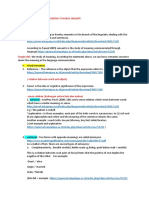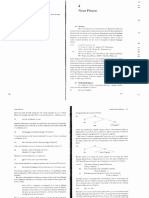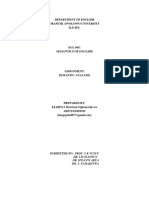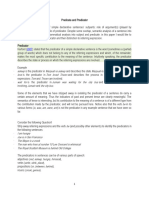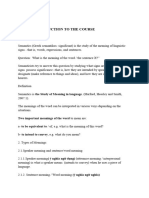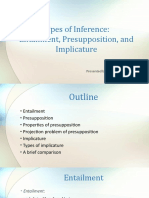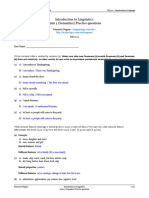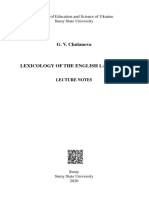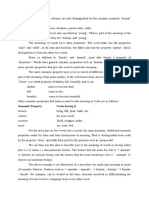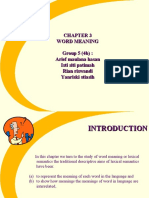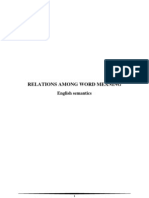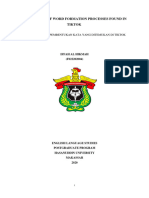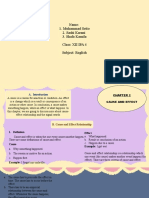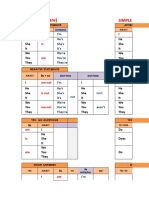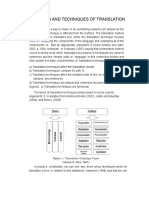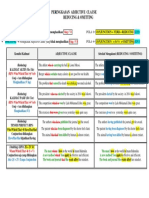0% found this document useful (0 votes)
878 views6 pagesSemantic Features
The document discusses analyzing word meaning through semantic properties and distinctive features. It explains that words can be analyzed into phonological and semantic components to understand how they are distinct from other words. Semantic properties help define word meanings and distinguish one word's meaning from others. Examples show how nouns and verbs can be analyzed into semantic features like [human], [male], [female], [young], [motion], etc. to specify their meanings.
Uploaded by
Marsuki GaniCopyright
© © All Rights Reserved
We take content rights seriously. If you suspect this is your content, claim it here.
Available Formats
Download as DOCX, PDF, TXT or read online on Scribd
0% found this document useful (0 votes)
878 views6 pagesSemantic Features
The document discusses analyzing word meaning through semantic properties and distinctive features. It explains that words can be analyzed into phonological and semantic components to understand how they are distinct from other words. Semantic properties help define word meanings and distinguish one word's meaning from others. Examples show how nouns and verbs can be analyzed into semantic features like [human], [male], [female], [young], [motion], etc. to specify their meanings.
Uploaded by
Marsuki GaniCopyright
© © All Rights Reserved
We take content rights seriously. If you suspect this is your content, claim it here.
Available Formats
Download as DOCX, PDF, TXT or read online on Scribd
/ 6







